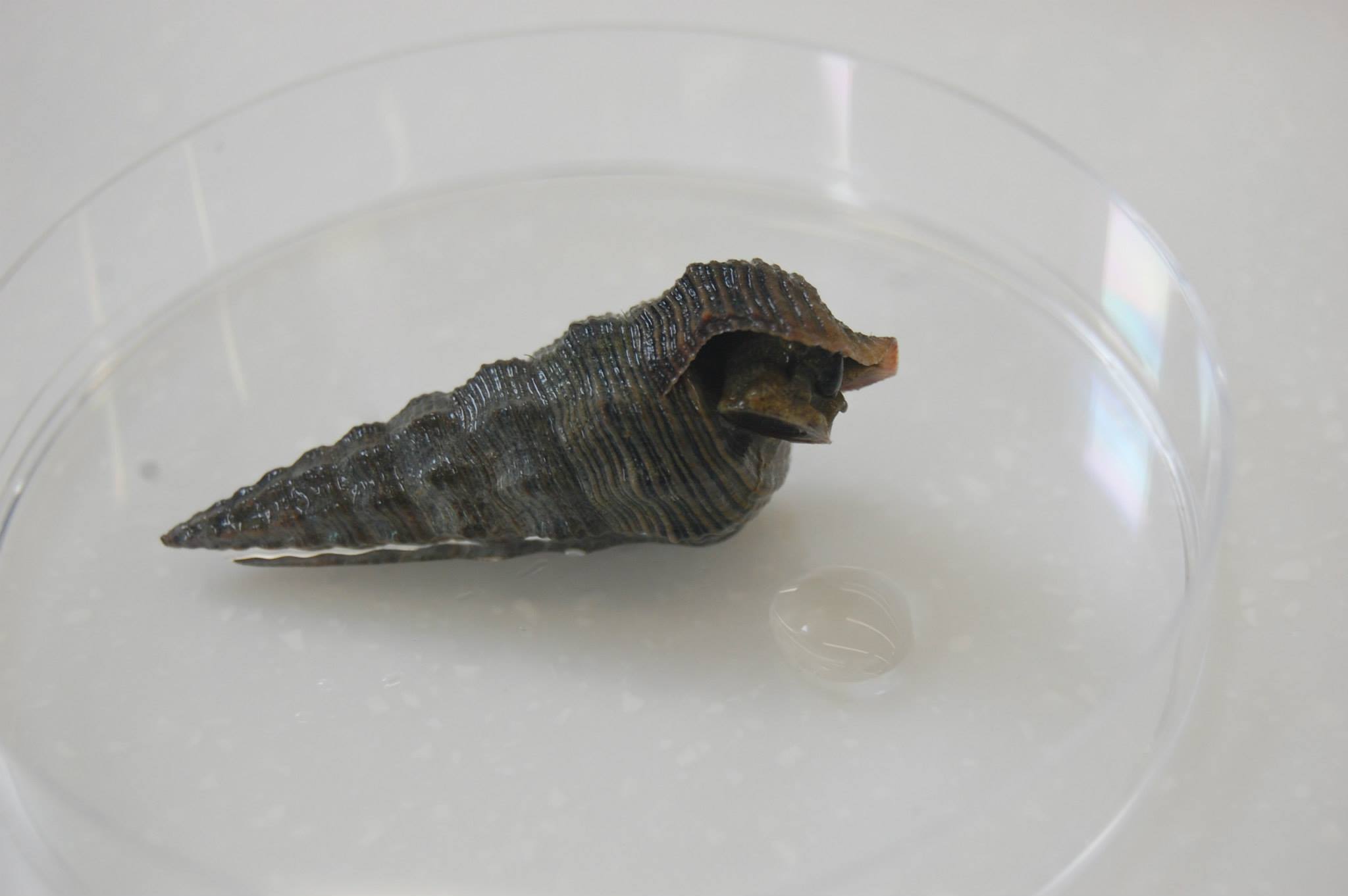External Anatomy
Pyrazus ebeninus are a part of the
Potamididae family. The
Potamididae family is typically described as horn snails and mud whelks. As all most all other gastropods,
P. ebeninus has the presence of a radula, single, solid calcareous shell, and muscular foot. The shell is formed from calcareous material secreted from the epithelium throughout the lives of the organism (Ruppert
et al. 2004). The anterior aperture of the shell is discontinuous with a siphonal columella, but with no columellar folds are present (Fig. 1). The outer lip of aperture is flared and no setaeon are present on the outer surface (Fig. 1, Beechey 2005). The anal canal is found inside the mantle towards the bottom of the visceral mass and the posterior medial outer lip sinus. The periostracum coating on the calcareous shell is smooth and the umbilicus located behind the siphonal canal is closed (Strong
et al. 2011).
P. ebeninus experience determinate growth with thickening of the apertural lip (Healy 1982). The shape outline is circular, while the shape profile is flat and elongated (Fig. 1).
P. ebeninus experiences multi-spiral coiling with central nucleus placement, consistent with other gastropods (Healy 1982). These organisms have short
cephalic tentacles with an elongated basal portion to allow the eyes to be positioned above the base, a characteristic seen only in Potamidids (Strong
et al. 2011) Unlike other Potamidids where the propodium has the anterior pedal gland that extending about half way down the side of the foot, the propodium pedal gland in
P. ebeninus is restricted to the anterior sole margin only (Strong
et al. 2011). The columellar muscle is approximately equal to the cavity length indicating it has strong muscular foot capabilities with rather quick response times. All potamidids have pallial sensory structures located at the mantle edge of the inhalant siphon at the posterior end exhibited by thin tentacles (Houbrick 1991).


Figure 1: Generally labeled diagram of the external anatomy of a
P. ebeninus specimen in sampling dish.